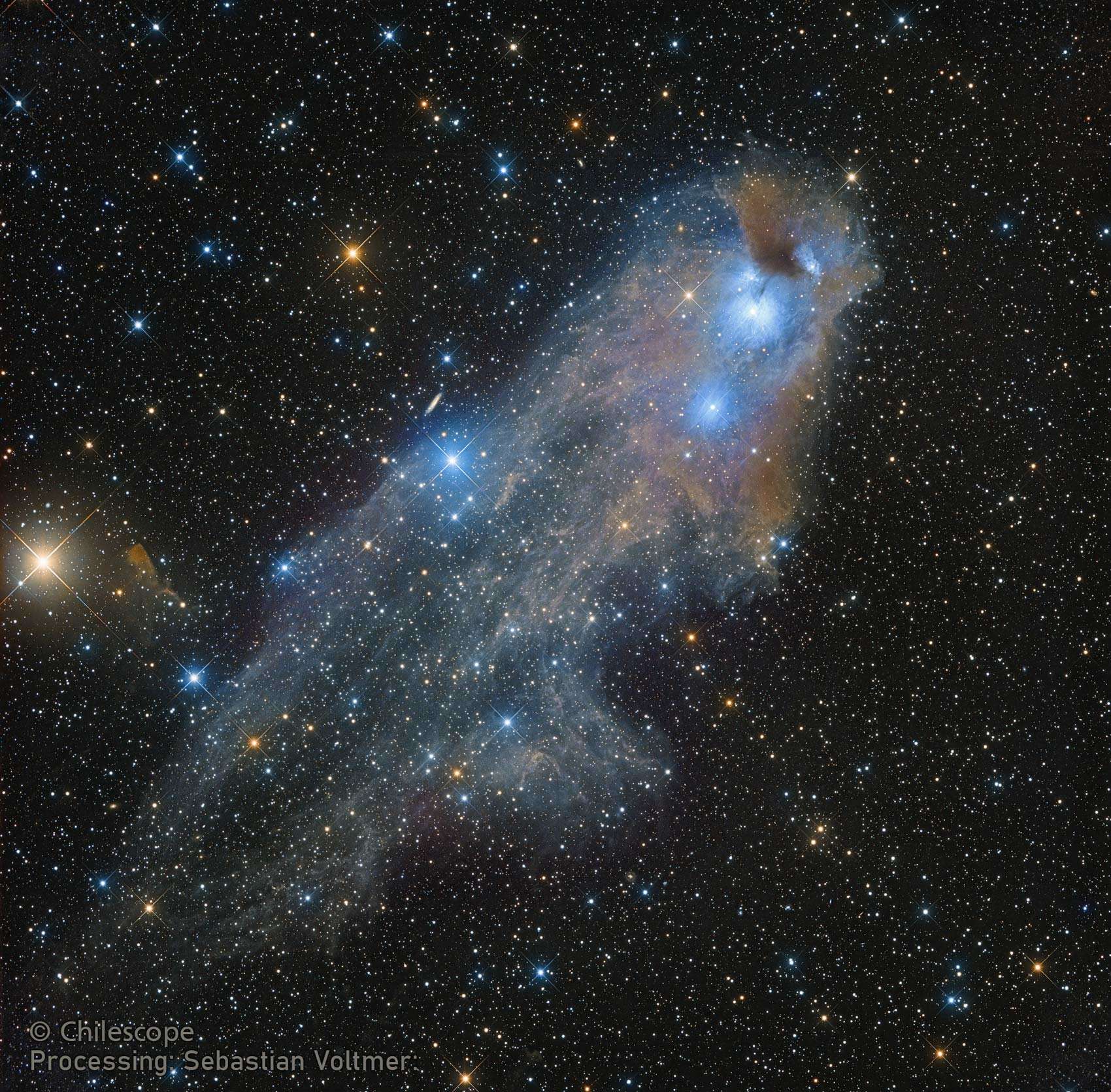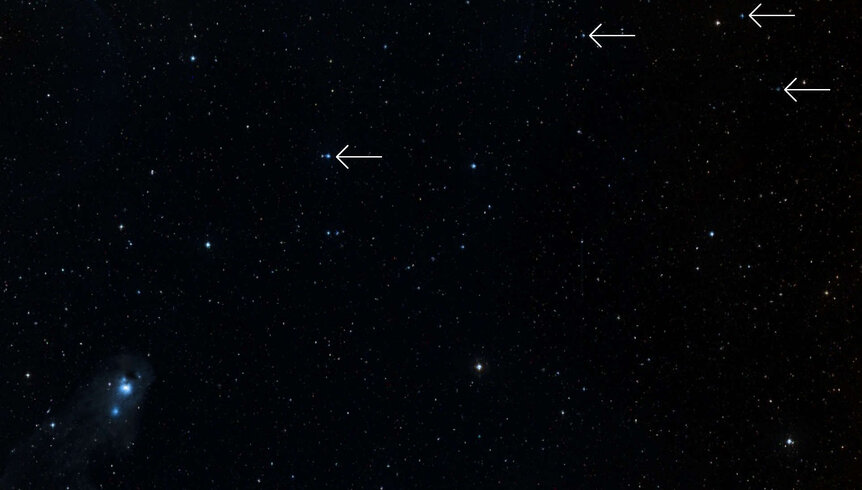Create a free profile to get unlimited access to exclusive videos, sweepstakes, and more!
Turns out, getting slammed by a supernova can make you collapse. If you're a cometary globule.

There is a type of cloud in space called a cometary globule — a blob of dense gas and dust, usually a light year or so across, with a long tail of material that can stream for several light years.
They're usually what are called a secondary star forming feature. If you have some huge gas cloud dozens of light years across, it can form thousands of stars, some of which are massive and terribly luminous. A dense clot of gas and dust nearby will face an onslaught of high-energy ultraviolet light from these stars, which heats and destroys the material, evaporating it off the denser part and blowing it away. After a while you get a cometary globule, with a dense head of material and a long tail.
The blast of light from those stars can cause the globule to collapse, forming stars inside them — this is given the awesomely cool term radiation-driven implosion. Altogether, all this tends to make cometary globules very cool looking objects.
A great but peculiar example of these is Cometary Globule 12, or CG 12, which is about 2,200 light years from Earth. At first glance it's a classic of the genre, a kinda-sorta spherical glob loaded with a couple of hundred times the mass of the Sun's worth of gas and dust, and a long tail stretching away for several light years. It's creating stars inside it, and they form a cluster called NGC 5367.
But when you dig a little, you start finding weird stuff about it.
It's hatching stars inside it, but at a far higher rate than most other globules; there are likely 60 or more young stars in it averaging about 4 million years old, but with some as old as 20 million years. Yet there's no big star-forming region nearby that it's a part of. In fact, it's located way above the plane of the Milky Way's disk, nearly 800 light years, while most other nebulae like it stick within a few dozen light years of the disk. On top of all that, the ages and distribution of stars inside it are such that a simple case of radiation-driven implosion is unlikely to be the cause of the star birth, or the force behind blowing that tail back.
So what's going on?
In 2008, some astronomers published a paper showing that there are a handful of massive, luminous stars in the sky that appear to be close to CG 12 to its northwest. The closest, called HD 120958, is quite the beast, and is only a half-degree away from it.
But that proximity could be an illusion. Two things close together in the sky can still be incredibly far apart, but we can't tell because getting that third dimension can be tough.
Enter Gaia. This European orbiting observatory is mapping nearly two billion stars in the sky, getting their precise positions, motions, and distances to Earth. A pair of astronomers took a look at the Gaia data for those stars near CG 12, and found that they are all roughly... 2,200 light years from Earth.
Whoa. That means they're at the same distance as CG 12 (within some uncertainty). Suspicious!
There's still a problem, though. The closest, HD 120958 is still about 50 light years from the globule, which is too far to be affecting it so strongly.
But here's the thing about massive, luminous stars. They explode.
The idea now is that some 20–30 million years ago these stars were born together in a nebula, probably associated with CG 12 in some way. One of these stars was particularly massive, burning through its nuclear fuel rapidly, and then exploding as a supernova. KABOOM! The outer layers of the star, with the mass several times that of the Sun, flew away at a decent fraction of the speed of light. After some years they overtook a nearby dense clot of gas and dust, slamming into it and compressing it, triggering a fecund period of star formation in it. It also would've blown back material from the clump, creating a long tail. Tada! CG 12.
After all this time I'd expect the tail to dissipate, but perhaps the light from those nearby luminous stars is enough to keep it flowing (if you follow the tail backwards, through the head of CG 12, it points almost exactly to HD 120958 — in fact, in the 2008 paper linked above, the astronomers posit the star may have been part of a binary system where the companion star blew up, leaving the one we see behind). Another remaining question is how all that junk got so high off the Milky Way's plane in the first place. That's really weird, and I have no ideas.
I expect this supernova explanation is right, but there's also more to figure out to about this weird and gorgeous object. That's always the case in science, isn't it? But at least it gave me an excuse to talk about cometary globules and post an incredibly beautiful picture of one. I make no apologies for that.
















